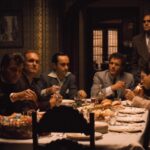
Facts About the Godfather Series You Can’t Refuse

Everything from actors and filmmaking to flubs, writing, and what could have been. The films have a huge cultural legacy and have been referenced too many times to count. Even if you’ve never seen these movies, you’ll find this list of facts and trivia too interesting to refuse
All in the Family
“The Godfather” and the next two films are about the Corleone family. It starts when Don Vito Corleone travels from the old country to the new world, and end with the final, irrevocable downfall of America’s most powerful crime family. However, another family helped make the film.
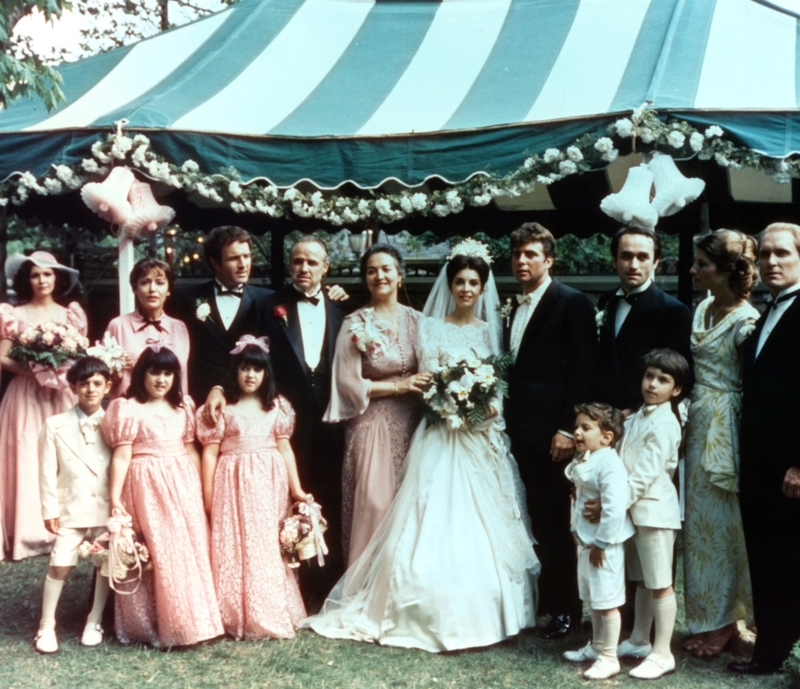
Francis Ford Coppola directed the entire series, while both parents, his sister, two of his sons, and his daughter also appeared in the films. His daughter is the most memorable, having a large role in the third film.
Nervous for Real
At the beginning of the first film, during the wedding, a mob enforcer by the name of Luca Brasi pays his respects to the powerful Don Corleone and stumbles over his words. He’s seen rehearsing what he would say a bit earlier. This detail wasn’t originally included, but Brasi’s actor, Lenny Montana, was so nervous about acting alongside Marlon Brando that he messed up.

Director Coppola thought this was a perfect way to build Brando’s character – to have a big guy such as Brasi be nervous just from being around Corleone’s presence. When Montana flubbed his line, they added the shot of him rehearsing at the wedding.
Allegorical by Demand
The Godfather is a long, cinematic allegory about American capitalism, according to the director. But that detail wasn’t originally part of the story. Francis Ford Coppola didn’t want to direct the first film, saying that he thought it was a glorification of the Mafia, and it would be in poor taste to make a film that cast Sicilians in such a negative light.
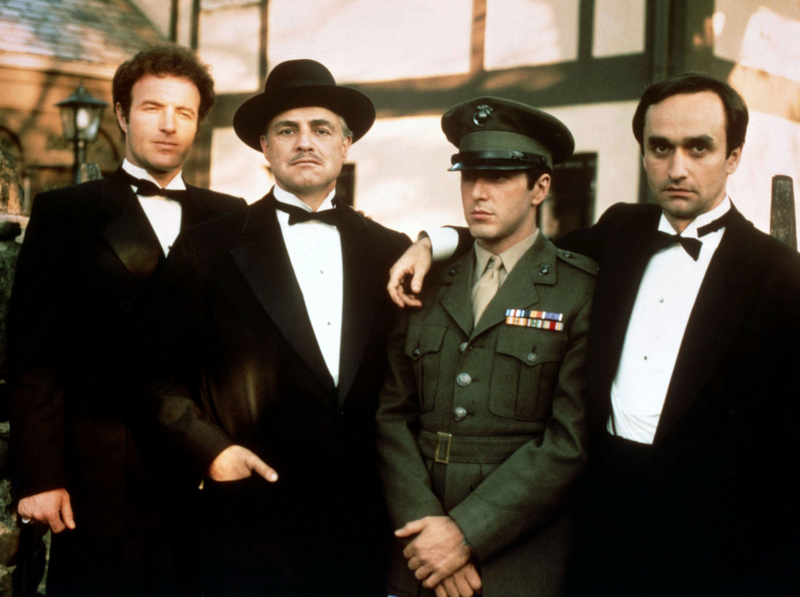
How it could be both a glorification and cast Sicilians in a negative light will remain a secret to everyone but Coppola. However, before fully passing on the project, the idea of making the films allegorical came to him, and he went forward with the project.
It’s All in the Name
The Corleones, from the Don all the way down, are powerful, intense characters. Sonny is violent and willing to use his fists to get his way, Michael never lets an opportunity pass him up, and even the youngest, Connie, gives her abusive husband as good as she gets. Fredo is something of an outlier, seen as quite an effeminate and weak man.
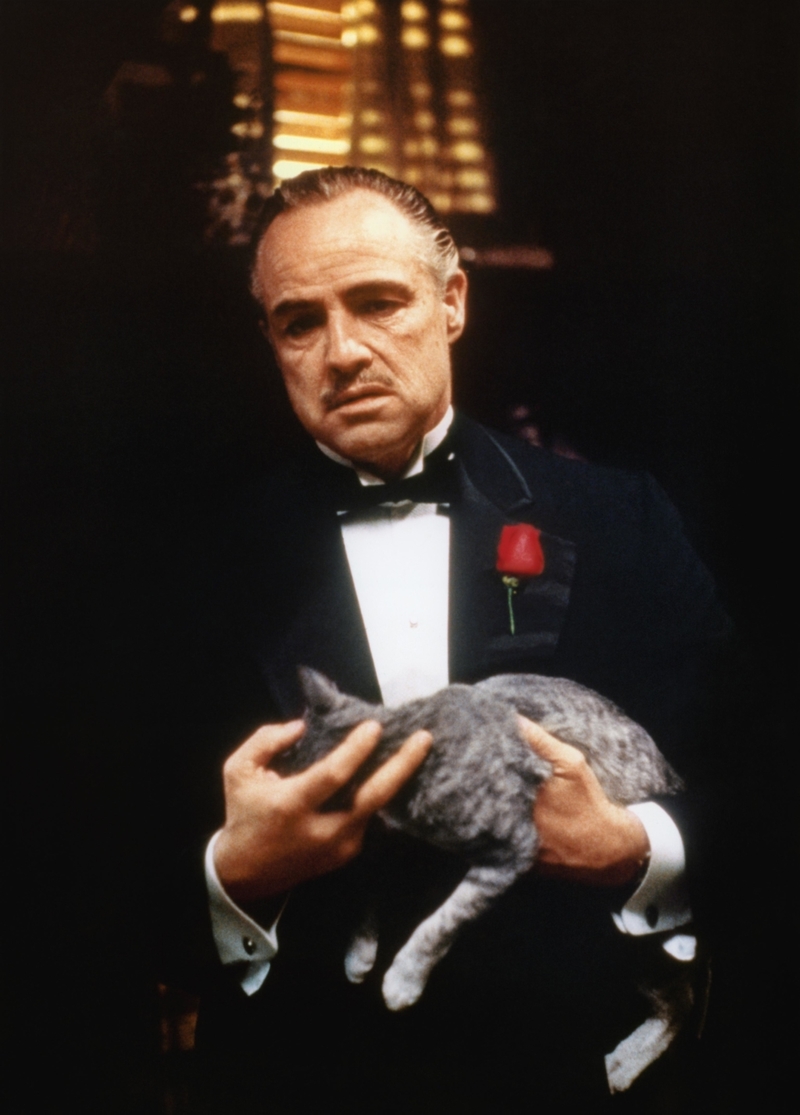
This is pretty fitting – the surname Corleone means “Lionheart” in Italian. From the threat of physical violence to a commanding and unforgettable presence, most of the Corleones, just like lions, rule their concrete jungles.
A Pair of Boycotts
It’s no surprise that “The Godfather” raked in the awards. It’s still seen as one of the best movies of all time, and when award season rolled around, it won plenty of Oscars.
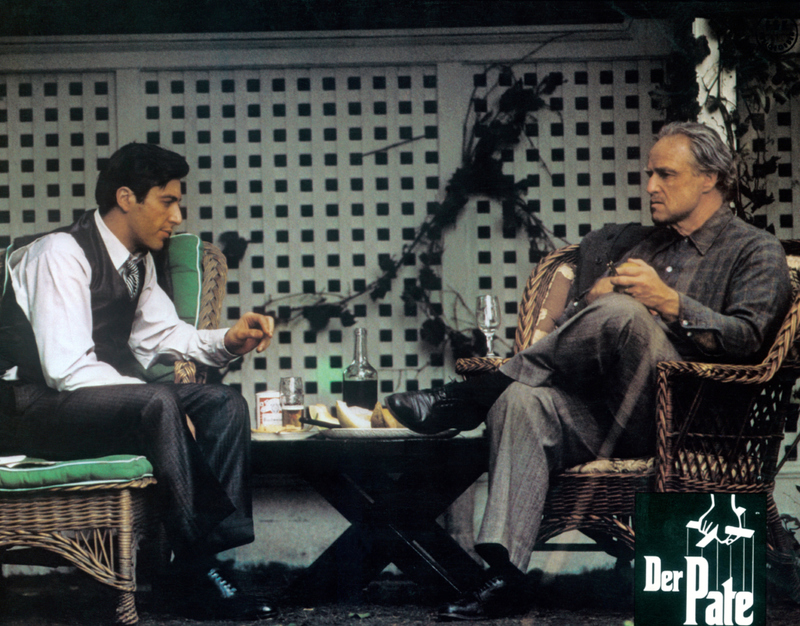
However, the movie’s two biggest stars, Marlon Brando and Al Pacino, both boycotted the Academy Awards that year for different reasons. Brando boycotted in order to protest Hollywood’s racist depictions of Native Americans. Pacino’s reason was a bit more selfish: he thought that, since he had more screen time than Brando, he should be up for Best Actor, instead of Best Supporting Actor. He didn’t win anyway.
What Was to Be
There are tons of ways “The Godfather” could have turned out differently. For one, Mario Puzo (who wrote both the book it was based on and the screenplay), at first wanted famous spaghetti Western director Sergio Leone to direct. However, Leone wasn’t interested in glorifying the Mafia.
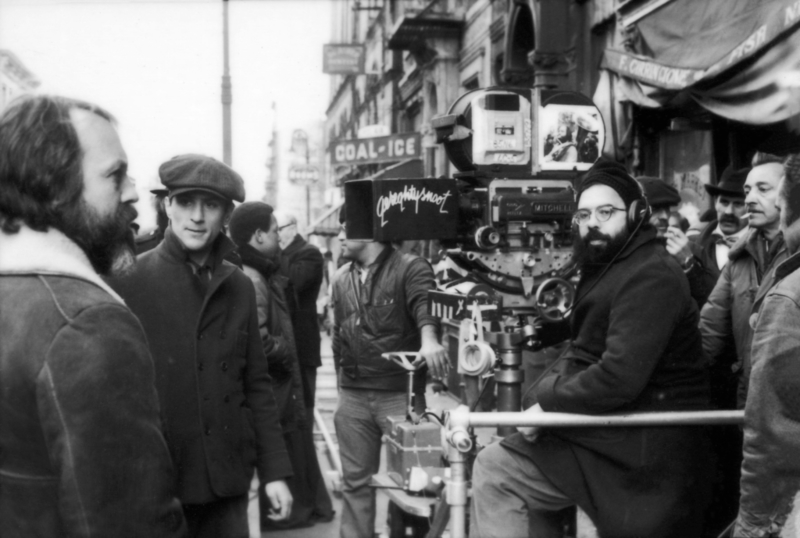
The script’s first draft was also as a low-budget gangster film instead of a high-budget mob epic, but when Coppola joined the project, he rejected the script and guided the movie toward a huge, sprawling, period piece. Actors, directors, and movie aficionados everywhere may never stop thanking him.
Just Making Stuff Up
Coppola wasn’t a big fan of the original script for “The Godfather”. It turns out that Puzo doesn’t actually speak Italian – which most people would realize is a pretty big blockage when writing a book and screenplay that is almost entirely made up of Italians and their culture.
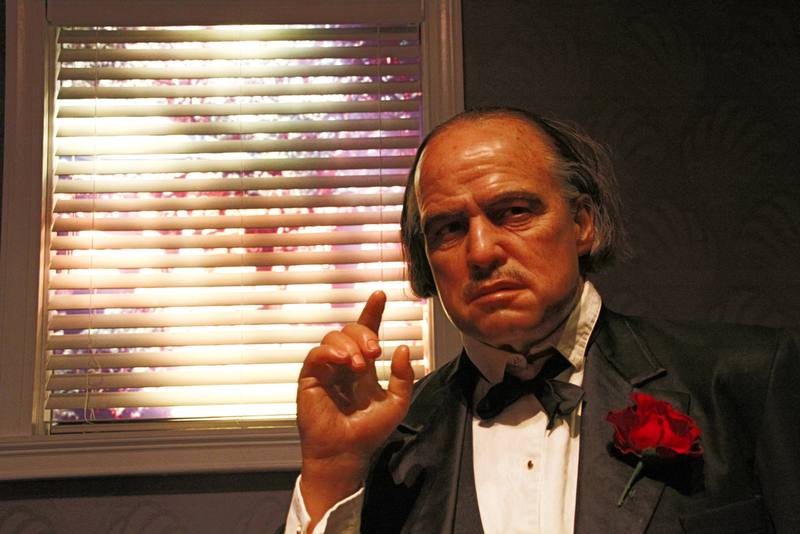
But Puzo forged ahead, doing his best to create phrases that meant what he wanted – and thanks to the popularity of the films, they’ve entered the American lexicon. “Don” now means boss, but it originally means something more like “Uncle,” somewhat similar to Japanese honorifics for an older male.
The Lost Minutes of Sonny
James Caan would have stolen the show as the emotional and violent Sonny Corleone in “The Godfather”, had he not been right by acting titans like Pacino and Brando.
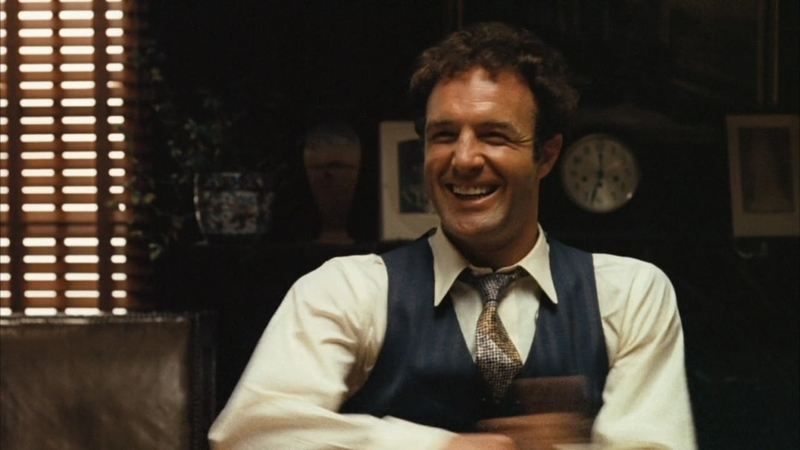
Audiences loved the character, and Caan knew he had done well. This prompted an outburst at the premiere of the film when he found out a good forty-five minutes of his character had been cut out. It severely limited the depth of the character, and Caan got into an argument with producer Robert Evans. While it wasn’t as violent as Sonny is in the film, some fiery language got tossed around.
The Man He Wanted
One of the biggest casting decisions for the film was that of Michael Corleone. Actors such as Martin Sheen and Jack Nicholson were all considered, but Coppola found them too WASP-y to play the Italian Michael. He pushed hard for his preferred actor, Al Pacino, and eventually got his way.
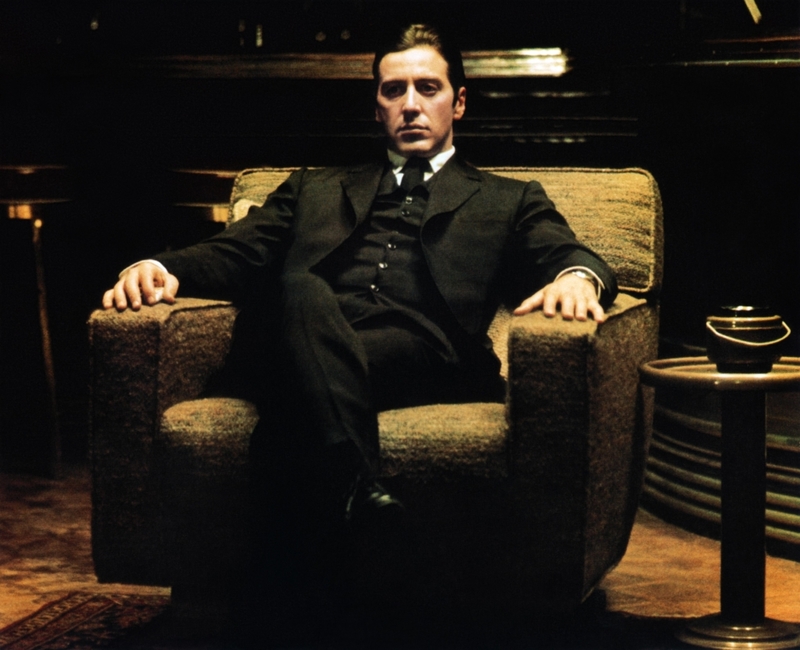
This was to the chagrin of producer Robert Evas who referred to Pacino as “The Midget.” Boy, this Evans character certainly wasn’t making any friends. Of course, Evans was probably plenty pleased with the finished project and Pacino’s performance. Eat your worse, Evans.
Switching Roles
Coppola wanted Pacino so badly, he forced Paramount Pictures to pull some strings and get Pacino out of his previous job (a role in the film “The Gang That Couldn’t Shoot Straight”). Robert De Niro replaced Pacino on the film – De Niro was originally going to be Paulie in “The Godfather”.
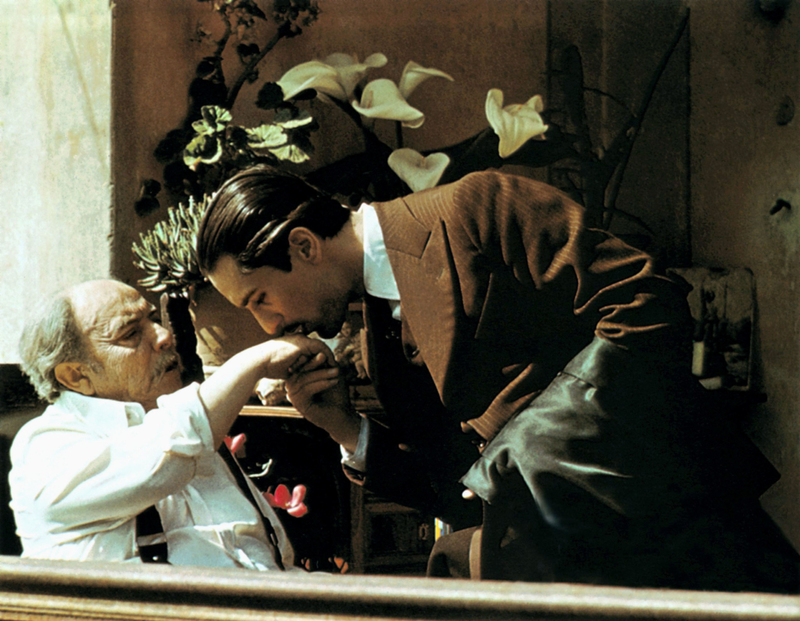
This ended up working out well for everyone; Al Pacino killed as Michael Corleone, and Robert De Niro went on to play young Vito Corleone in “The Godfather II”. This ended up being his big breakout role and even earning him an Oscar.
Two Actors and Two Oscars
Robert De Niro winning the Oscar for Best Actor thanks to his role as Vito Corleone in “The Godfather Part II”. He and Marlon Brando were the first time ever – and the only time since – when two actors have both won Oscars for portraying the same character in two different films.
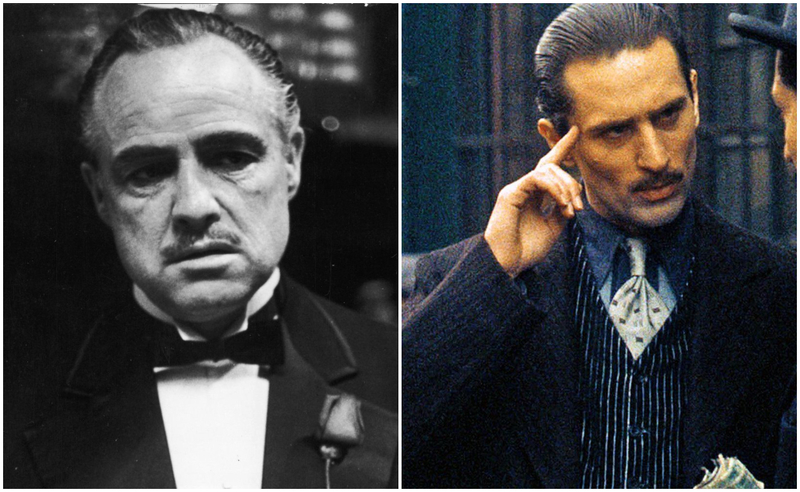
In addition, both “The Godfather” and “The Godfather Part II” are also the only first two films of a trilogy that have both won an Oscar for Best Picture. They were so close to the three-peat, but, well, then “The Godfather Part III” happened.
The Biggest Surprise of His Life
Perhaps the most famous moment in the entire trilogy is when Jack Woltz, defiant film mogul, wakes up to find his beloved horse’s severed head in his bed. Everybody who’s seen the scene can picture it pretty accurately, but there’s one person who never forgot it until his dying day, and that’s John Marley, the actor who played Woltz.

You see, Marley thought he would “wake up” next to a fake, dead horse. Instead, when the cameras started rolling and Marley went through his steps, he found a real severed horse head and real horse blood. The screams you hear in the film are perfectly real.
Every Italian Should Know
If there’s one thing people know about Italians, it’s the hearty, tasty, and filling Italian food that graces their plates and tables. The Godfather has plenty of opportunities to show off pasta, bread, wine, and even some tasty oranges. There’s even one point in the first film when an overweight capo rattles off a tasty-sounding recipe for great tomato sauce.
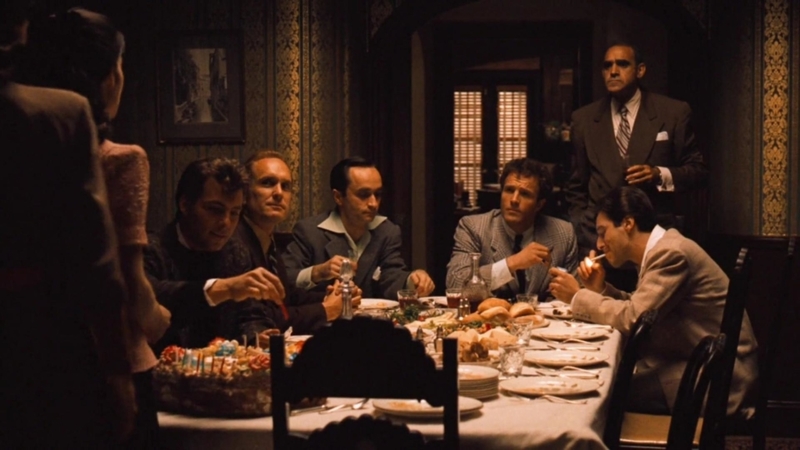
In fact, not only is this recipe real (we can neither confirm nor deny that it tastes good) but it’s an old Coppola family recipe. If you happen to whip up a batch, let us know how it is!
An Offer He Couldn’t Refuse
Francis Ford Coppola, in the midst of making this famous film, found himself at odds with certain Italian-American groups, such as The Italian-American Civil Rights League. They in particular took umbrage with the terms “Mafia” and “Cosa Nostra” (another term for the Sicilian Mafia) used in the film, as they might have ended up stereotyping Italian-Americans (though the stereotyping happened anyway).
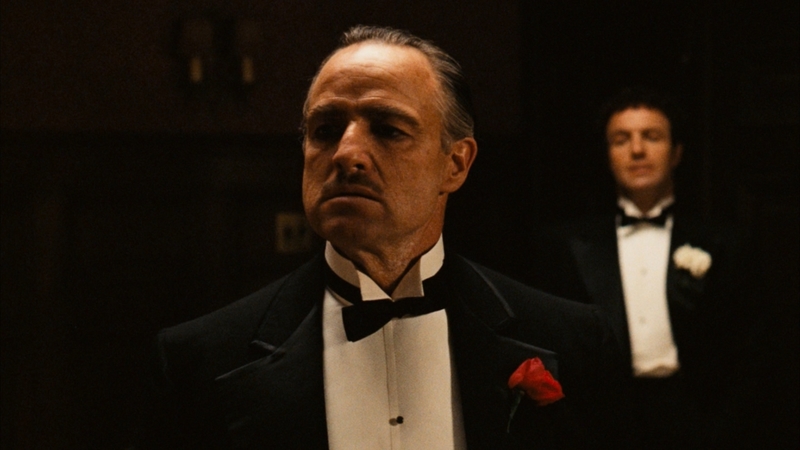
Coppola had to rewrite the script after these groups fought the use of these terms, by which we mean made direct threats. But no stereotyping, you know? We don’t want anybody doing that sort of thing. Fuhgeddaboutit.
Real-Life Extras
It’s pretty commonly known that Coppola took out the terms “Mafia” and “Cosa Nostra” taken out of the movie. However, there was some pressure on set, thanks to the movie extras who were, it turns out, actually part of the Mafia. This is due mostly to the influence of The Italian-American Civil Rights League, which was actually run by mob boss Joe Colombo.

While none of these extras had much of a role, appearing as little more than muscle, background characters, or maybe conversation partners that other characters interact with. Coppola was probably happy with the authenticity but might not have liked the implicit threats.
One of the Healthiest Fruits
It’s been said that every time an orange appears on-screen, it foreshadows impending, or even imminent, death. This is upheld for the most part, especially when Don Corleone has a serious heart attack in an orange grove.

However, art directors simply included oranges a lot because they showed up well against the film’s sepia tone, so they’re present in lots of scenes. However, Coppola ran with this idea, making it true in both “The Godfather Part II” and part III.
His Favorite Line
Mario Puzo was pretty proud of the novel “The Godfather”. There’s one line, in particular, he specifically requested it to make it into the film. While Coppola was on board, the person who spoke the line wasn’t. The line is “A lawyer with a briefcase can steal more than a hundred men with guns,” and it’s none other than Vito Corleone who utters it.

Marlon Brando is never one to keep his opinion to himself, and he refused to say the line since he thought it was far too preachy. Puzo and Coppola might have liked the line, but when Brando says no, it’s no.
The Shaking is Real
When Vito Corleone is recovering in the hospital, mob enforcer Enzo pays him a visit. Actor Gabriele Torrei had never acted with Marlon Brando, and this scene in the hospital room was his very first.

His shaking and nervousness were evident even on camera, and though he got through his scene well, yet again the effect that Brando has on people made for a good way to build up the Don. Just like with Lenny Montana, they went back and filmed a short scene of Enzo entering the hospital, muttering to himself and steeling himself for his meeting.
The Bulldog
Vito Corleone’s accent and face both became classic pieces of film history. Sometimes you can barely understand this powerful mob boss, but the strength of his delivery and powerful persona meant no one dares misunderstand him. Coppola specifically wanted an “old bulldog” look and had a special mouthpiece developed to puff out his cheeks.
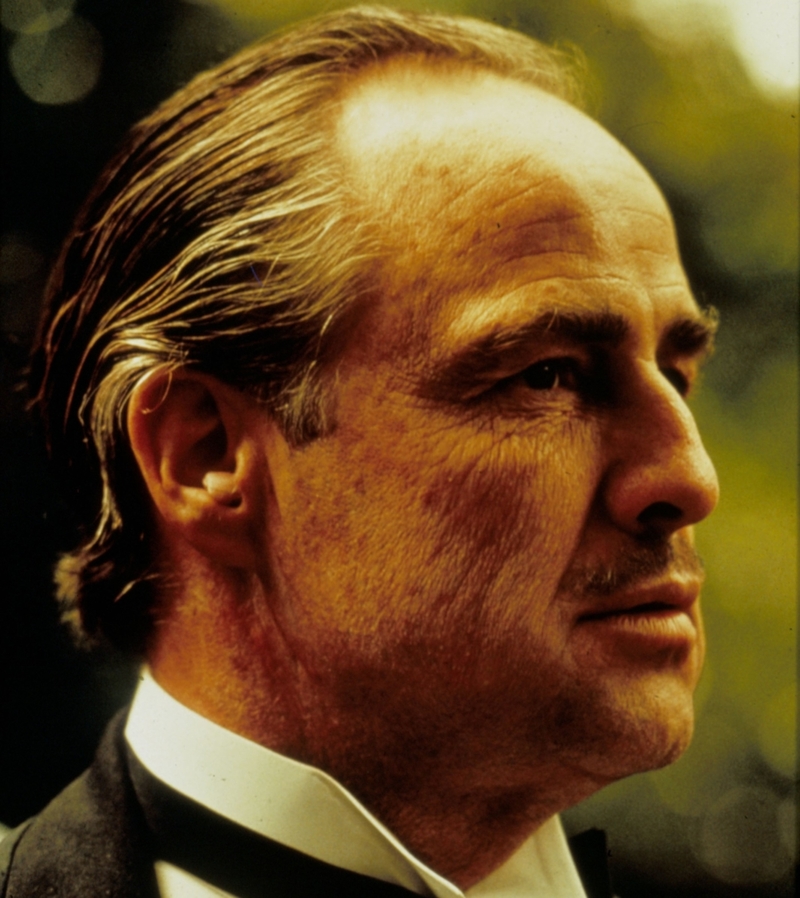
The mouthpiece added the muffled voice and the was somewhat uncomfortable so Brando rehearsed with cotton balls. The mouthpiece is now on display at the American Museum of Moving Image in New York.
Got in Through Other Ways
Not everybody in “The Godfather” was an experienced actor. Some were even parts of the real Mafia. Most of them didn’t do much beyond set dressing, but Gianni Russo, who played Carlo Rizzi, was originally a mob associate to Mafia boss Frank Costello. When he heard about the film, he used his organized crime connections to secure a role in the film.

The role was small, but he was still present – playing Connie’s husband, who regularly abuses and cheats on her. While Vito does nothing – Italian tradition forbids parents meddling in children’s marriages – but Connie’s older brother Sonny has no such hang-ups.
A Real Threat
As this was Gianni Russo’s first film and he didn’t have any acting experience. He was flying by the seat of his pants when it came to his character, which was frowned upon by Marlon Brando. That changed quickly when Russo approached Brando and threatened him.

Brando had no idea this was a real threat but thought the way Russo delivered the threat was so fantastic his opinion of the man changed in a heartbeat. That’s Brando for you. We don’t know what the threat was, but Brando laughing it off is quintessential Marlon.
Based on the Real Deal
A lot of details in the films came from the real crime families of the time, including even Marlon Brando’s voice. He based it on the real mob boss Frank Costello, who had recordings taken of him during one of his trial hearings.
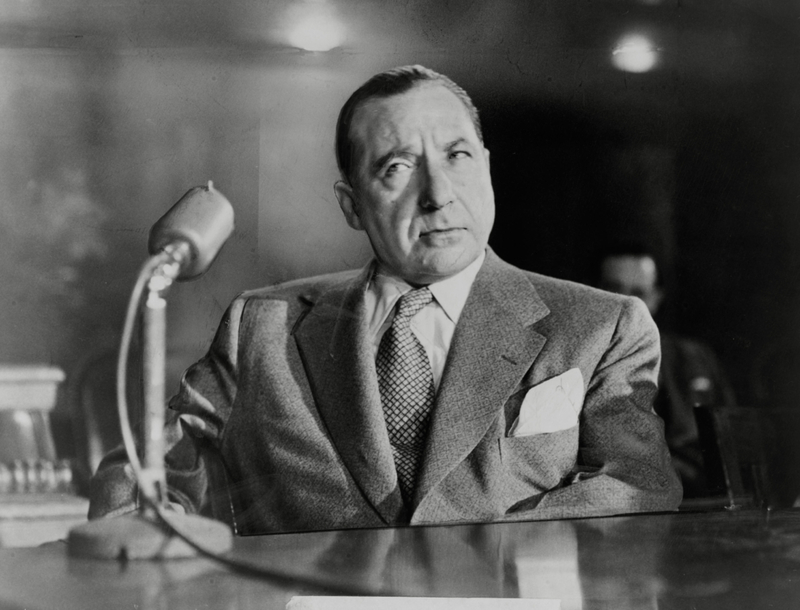
The thick, powerful, mumbling method of speech inspired Brando as he was conducting his research, and when he went in for his audition he stuffed cotton balls into his mouth to produce the muffled voice. Of course, Coppola and the producers loved it, and even now we can all hear it in our heads.
Into the Thousands
“The Godfather” had an incredible amount of extras signed on to help, and there are few scenes that reach a monumental number. For instance, during the scene where Sonny brutalizes Carlo used over seven hundred extras while filming it.
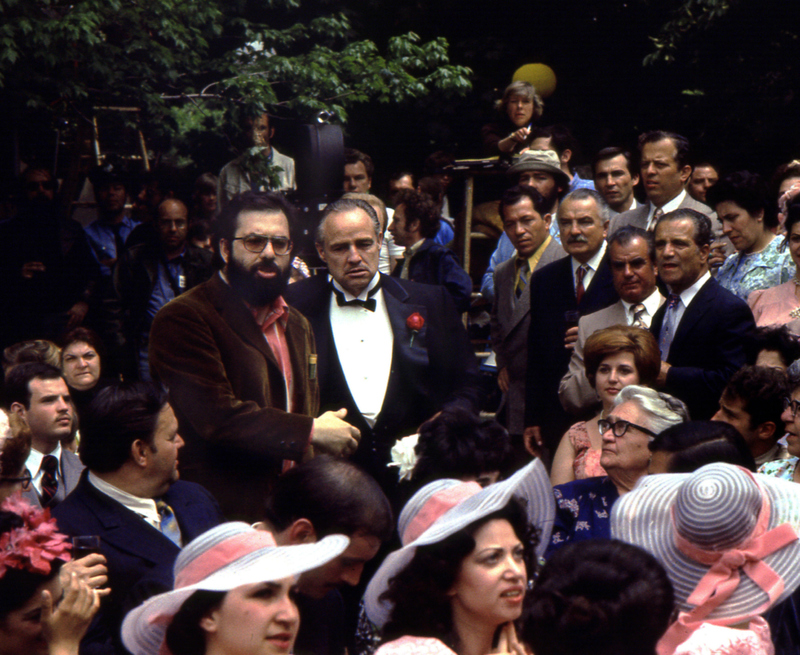
The wedding scene tops even that, using more than seven-hundred and fifty. The number of extras gives the film a huge, real effect, and if you’ve ever been part of an Italian wedding, you’ll find it runs pretty close to real life. Some of the guests don’t even know the bride or groom!
Packing on the Pounds
Marlon Brando was a pretty big guy during the filming of “The Godfather”. Even so, he decided to pull a few jokes on some of the other actors. When Don Corleone has to be carried up to his bedroom coming home from the hospital, the hectic scene is full of people trying to get out of the way and others trying to carry him up a set of stairs.

Marlon Brando decided he needed more weight in his bed, and packed it full of additional weights, just to give the actors who had to carry him a harder time.
Acting Off the Cuff
A lot of the film’s ad-libs come from James Caan, who played Sonny. During his fight against Carlo Rizzo, he improvised slamming the garbage can down on Carlos (it’s kind of easy to tell that he missed on purpose if you’re watching for it) and he also threw in saying “bada-bing” after hearing it from real-life mobster Carmine Persico.
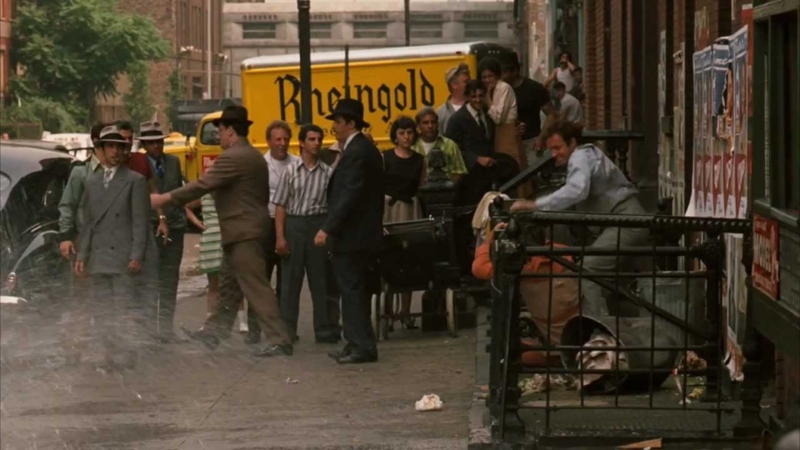
He also improvised the move that establishes his character, where he threw an FBI photographer to the ground, and then tossed him a bundle of bills for breaking his camera.
On the Fly
Brando flexed his improvisational muscle during this epic film. His most famous addition to a scene was when Vito Corleone slaps Johnny Fontane, a singer, in the face. Actor Al Martino’s shocked reaction was entirely real – it’s not like he was expecting to get slapped in the face by the almighty Marlon Brando.

James Caan said that “Martino didn’t know whether to laugh or cry.” Brando didn’t miss a beat in the scene, continuing on with his rock-solid performance despite Johnny Fontane going wet in the eyes.
A New Way to Film
“The Godfather” has it all. Stellar performances, a grand musical score, and a brand new way of filming thanks to famed cinematographer Gordon Willis. He wanted the film to be all about the people and their points of view. Thus, he did something unique at the time, which was to make each shot in the movie from a hypothetical point of view of a character.
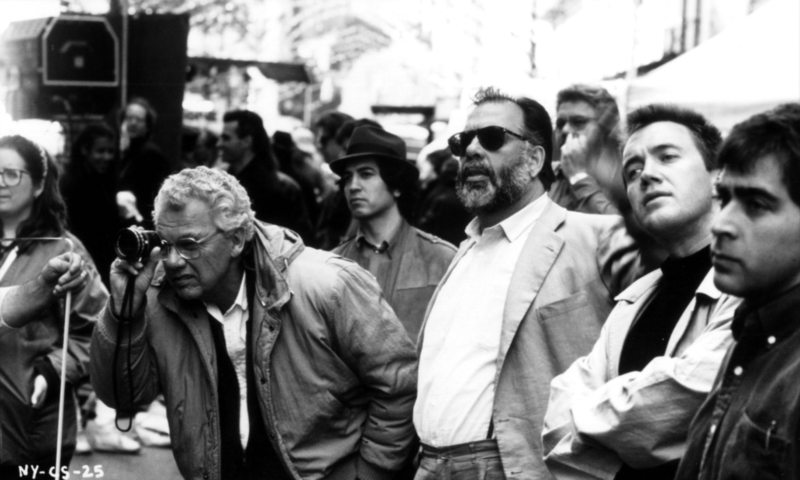
Though he didn’t use the locations where real characters would be standing, he set up the cameras in specific places – and even at specific heights – so that they could be an onlooker.
The Single Exception
There is one exception to the above idea of Willis’s point-of-view filming, and that’s when Vito Corleone – out buying some fresh oranges, is shot. This leads to his stay in the hospital and Sonny’s reign of terror, and it’s shot from up in the air in the middle of the street.
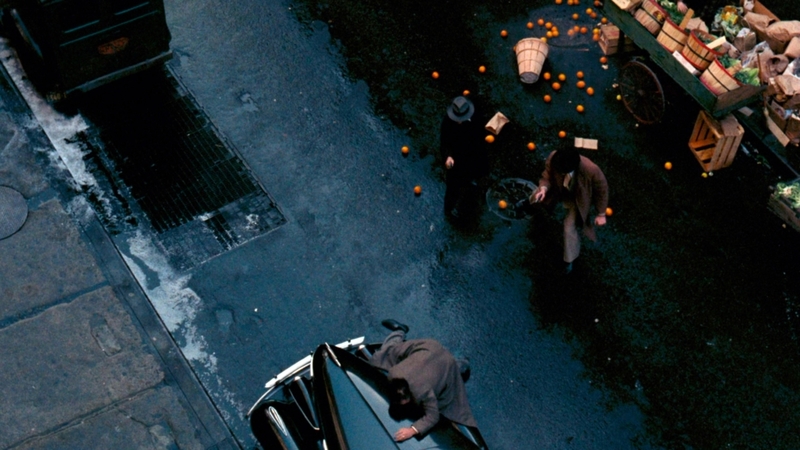
This was a specific shot that Coppola had in mind, but Willis was having none of it, trying to stick to his guns with regards to his filming. However, Coppola eventually got him to relent by convincing him the shot was from God’s point of view.
The Start of a Trope
Since “The Godfather” came out, it’s become standard practice to see a powerful character stroking a cat on his or her lap while dishing out orders, threats, or punishments.

A fluffy purring cat has been seen time and time again in the film, and it’s all thanks to Marlon Brando. The cat he’s petting in the scene near the beginning of the movie was just a stray that jumped into Brando’s lap, who rolled with it and gave the kitty a little bit of love.
The Cat Almost Needed a Credit
The cat that ended up in Brando’s lap really seemed to be enjoying itself. It started purring so loud thanks to the affection Brando was giving the microphones pick it up. It even made some of Brando’s lines inaudible!
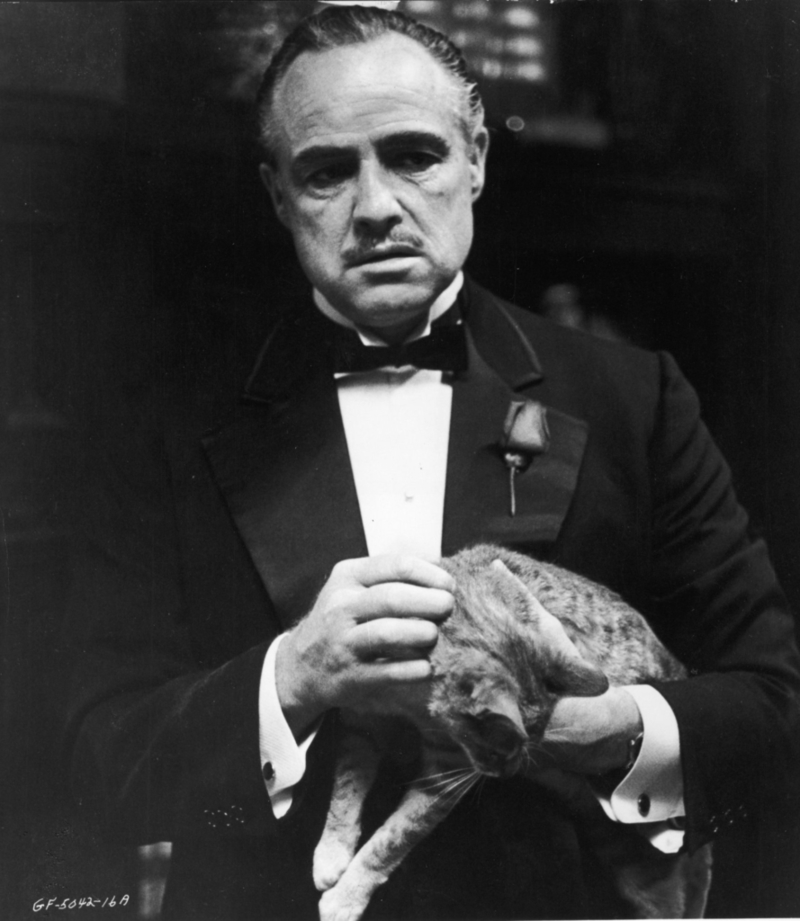
Brando had to go in later and redub them, and it’s possible to still hear the cat purring during the scene. The cat ended up working in the movie’s favor since while the Don is dishing out hard statements and intimidating people, he’s also proving he has a softer side.
Just Like During the War
A great deal of “The Godfather” is set during or just after World War II. This means several things had to be done to make fashions, details, and even cars look right for the era. In particular, the cars in the film all featured wooden bumpers.
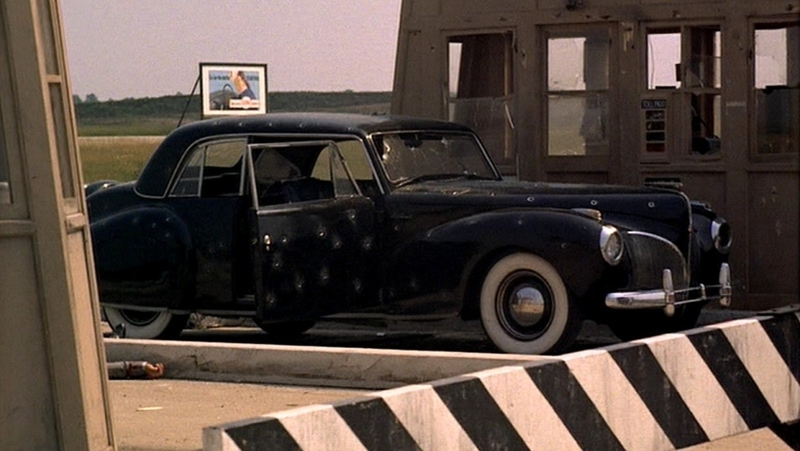
To help the war effort, most cars during World War II donated their chrome to the military and replaced them with wood – it didn’t do as much to protect the car in the event of crashes, but with a little bit of paint they look pretty much the same.
Animal Rights Hypocrisy
First, there were the Italian-American groups, but then came the animal rights activists. They had a big problem with the horse head scene, which anybody should have been able to guess.

Coppola thought it was somewhat hypocritical since lots and lots and lots of people were killed during the movie. Coppola even said outright: “When the head arrived, it upset many animal-loving crew members, who liked little doggies. What they don’t know is that we got the head from a pet food manufacturer who slaughters two hundred horses a day just to feed those little doggies.”
Say My Name
As time goes on in the film, Michael Corleone gets married and has a son. The son’s name is Anthony, and so is the young actor who played Anthony. This is because the young man didn’t have the wherewithal to respond to a fake name, and the other actors with him, including Al Pacino, could only get his attention by calling him by his real name.

It’s really no surprise – when any of us were three years old it would probably be impossible to do anything like acting and even respond to a name we didn’t recognize.
The Prince of Darkness
One of the memorable visual aspects of “The Godfather” is the shadowy way in which it was shot. Gordon Willis did this in order to produce an aura of darkness around the violent and dangerous Corleone family and the death that both follows and comes from them.

When Coppola and Willis showed Paramount Pictures the finished film, the executives thought it was too dark, not thematically but visually – this led to a long discussion between Coppola, Willis, and the execs about the artistic merit of the choice. Paramount relented, but it earned Willis a nickname: “The Prince of Darkness.”
Violence Sells
Paramount gave Coppola, Willis, and the rest of the team plenty of leeway and let them do what they wanted, with one exception. They weren’t sure if the movie would be a hit or not – no one ever is – so they asked Coppola to add more explicit violence because they knew that was what people wanted to see.
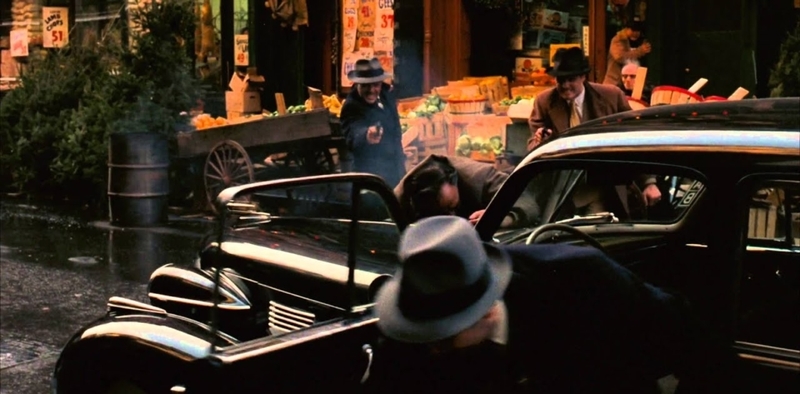
This addition worked for a couple of reasons, not only to highlight how deadly the Corleone family was but to further the allegorical tie-in to the dangers of capitalism.
Nobody Ever Said Brando Was Easy to Work With
Marlon Brando had tons of eccentricities while filming, including an incredible love of food. And this happened to affect the filming of “The Godfather” in a big way.

While filming the scenes set in Little Italy, Brando became obsessed with something really specific: spicy squid with hot sauce. And when we say obsessed, we mean obsessed. He had to have some of it in his view at all times while filming the scenes, even during the shot when Vito leans over the body of his dead son Sonny. Off-camera, Brando is holding a container of the spicy squid.
The Actors who Missed Out
It’s hard to picture anyone but Marlon Brando filling Don Vito Corleone’s big shoes, but there were plenty of actors who almost got the role of a lifetime instead of Brando.
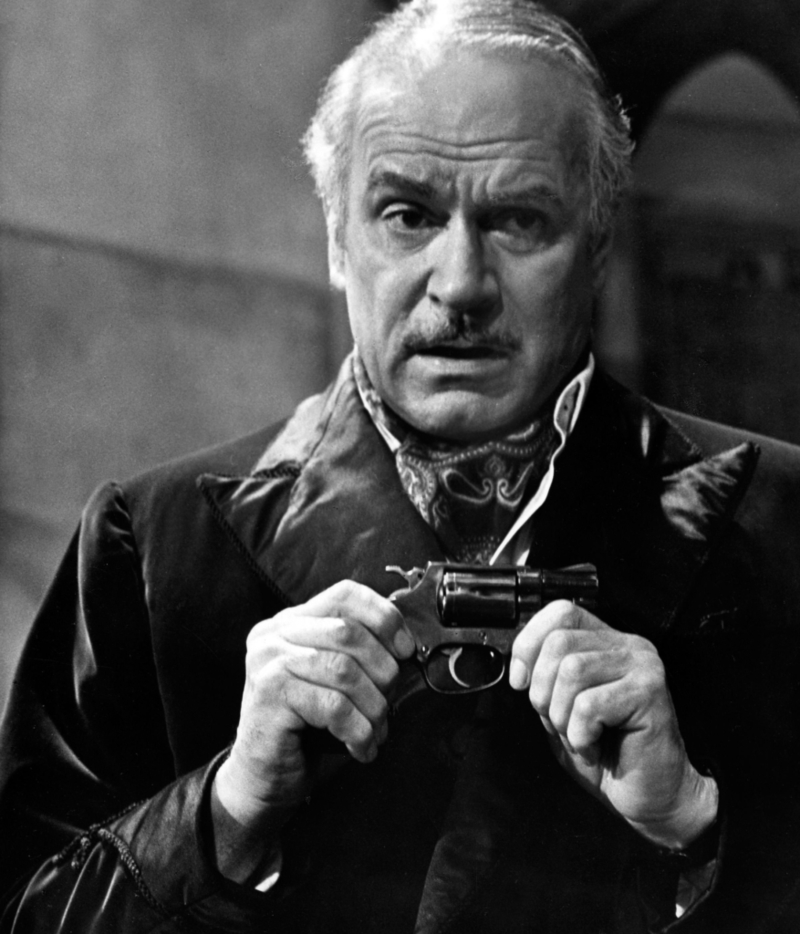
Laurence Olivier was the first to get offered the role, and surely would have delivered a memorable performance. Sadly, he was dealing with health problems at the time, and so turned it down. Frank Sinatra lobbied hard to be cast in the role, as did Orson Welles. In addition, famous names such as Ernest Borgnine, Burt Lancaster, Anthony Quinn, Edward G. Robinson, and plenty of others were considered.
Lots of Acting Options
Since the movie had lots and lots of roles, the cast was huge, and some incredibly famous and surprising names were considered. Robert Redford was considered for Michael Corleone, as well as Jack Nicholson, Dustin Hoffman, and Tommy Lee Jones.
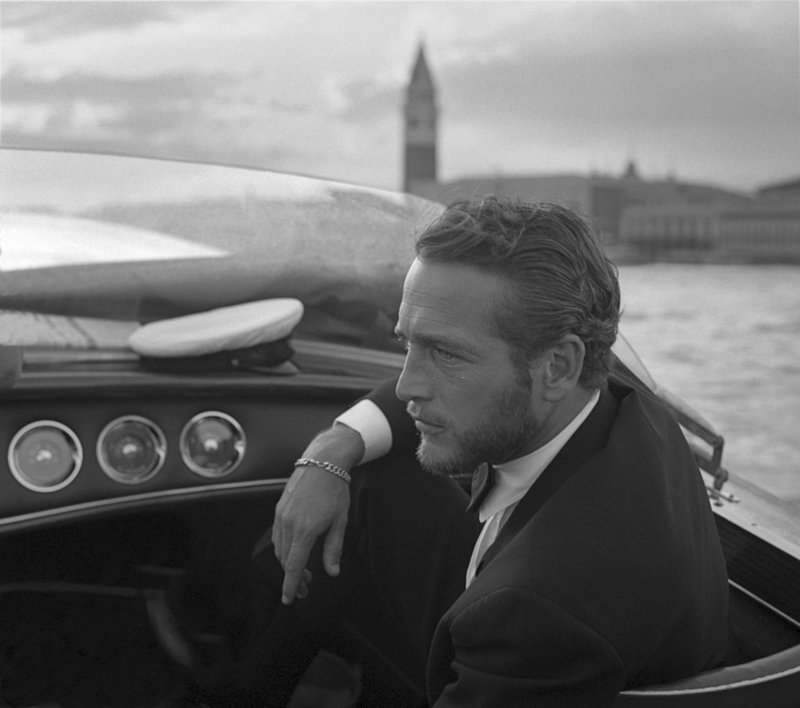
Anthony Perkins and Burt Reynolds both auditioned for Sonny, and Steve McQueen, Paul Newman, and even Elvis Presley auditioned for Tom Hagen… but Presley was way more interested in playing Vito Corleone. No shade on Elvis, but we’re kind of glad they went with Brando. Of all things, Sylvester Stallone auditioned for both Paulie and Carlo.
Method Acting Madness
At one point in “The Godfather”, a corrupt police officer punches Michael Corleone and breaks his jaw, which leads Michael to kill the cop along with a few others. It’s a critical step on his path to leading the Corleone crime family, but there’s an interesting detail.

After Michael’s jaw breaks, he gets it wired shut to heal. Al Pacino acts superbly during these scenes, helped mostly by the fact that he got his jaw wired shut in real life, too. Pacino is an actor dedicated to his craft, but this takes preparing for a role to a whole new level.
Line!
Marlon Brando has plenty of eccentricities. One of them is he hates memorizing lines and required cue cards to be in sight at all times so he could get his lines right.
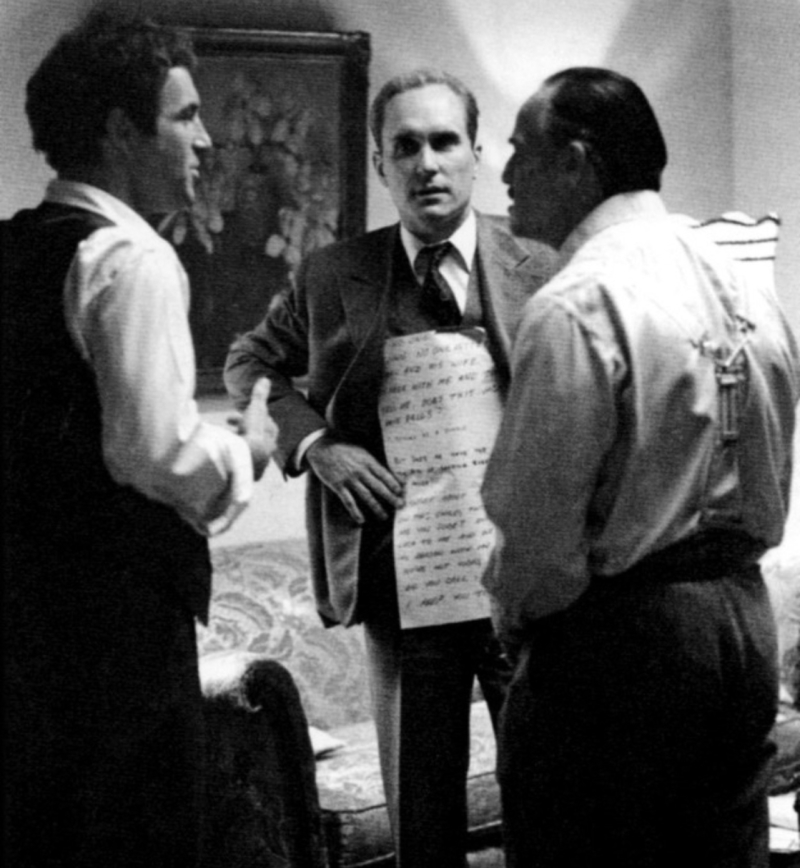
These cards were often hidden behind props and sometimes were even sewn into the clothing worn by Brando’s castmates. The reason Brando didn’t like to memorize lines is that he thought it ran counter to his method of acting. He wanted an off-the-cuff feeling for this powerful character, and a rehearsed feeling wouldn’t give the character the savoir-faire and easy power Don Vito should have.
The Man and the Moon
It may come as a surprise when you find out that the actors spent a lot of time mooning each other. This was just one of the dozens of pranks and gags pulled in order to break up the tension of the movie, and it became the go-to gag.

Actors and crew got used to peeking around a door and checking for a bare bottom. Who was the best at this juvenile act? Brando, who thanks to his heroic efforts furthering the craft was nicknamed “Moon Champion” – he even got an honorary leather belt for his prank efforts.
Back on the Horse
Animal Rights groups complained about it. Cast and crew complained about it. Nevertheless, the legendary scene with the horse head remains one of the top-of-the-line movie scenes for fans and foes alike.

It’s practically synonymous with the film, and it’s the easiest way to invoke the spirit of the film. Yet the scene almost didn’t make it into the finished product. Among the people who didn’t like the scene at first was Coppola, who thought the book’s presentation of the scene wasn’t very good. In the end, he found it too good to leave it out.
Frank and Johnny
It’s often thought that Johnny Fontane, the singer who shows off at Connie’s wedding, was based on Frank Sinatra. It had long been rumored that Sinatra had used his mob ties to go from music to movies.
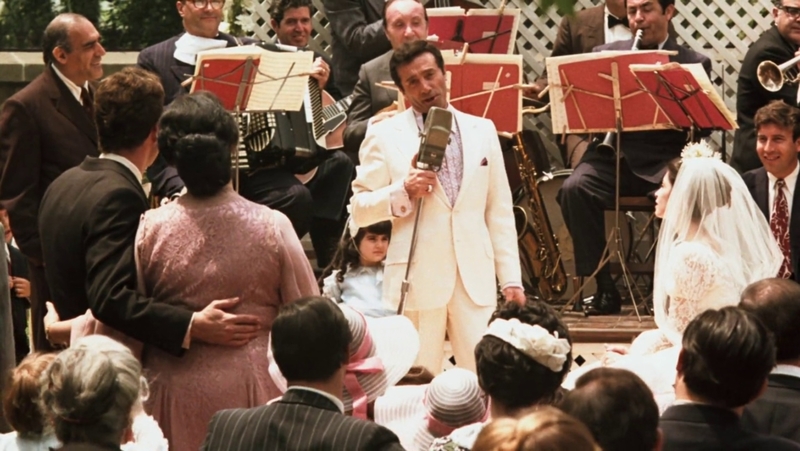
Sinatra wasn’t a fan of Johnny Fontane, and it led to a public confrontation with Mario Puzo, calling him names and threatening to beat him up. It’s thought that Fontane’s role in the film version of “The Godfather” was much smaller than the book because of this.
The Bulldog’s Resurgence
The movie led to a huge comeback for Marlon Brando, as during the sixties most of his movies had failed in big ways. In fact, by the time of “The Godfather”, his flops outweighed his successes, and most movie studios considered him a risk. Still, he became the patriarch of the Corleones, and his star rose again, leading to roles in movies such as “Last Tango in Paris”, “Apocalypse Now,” and “Superman”.
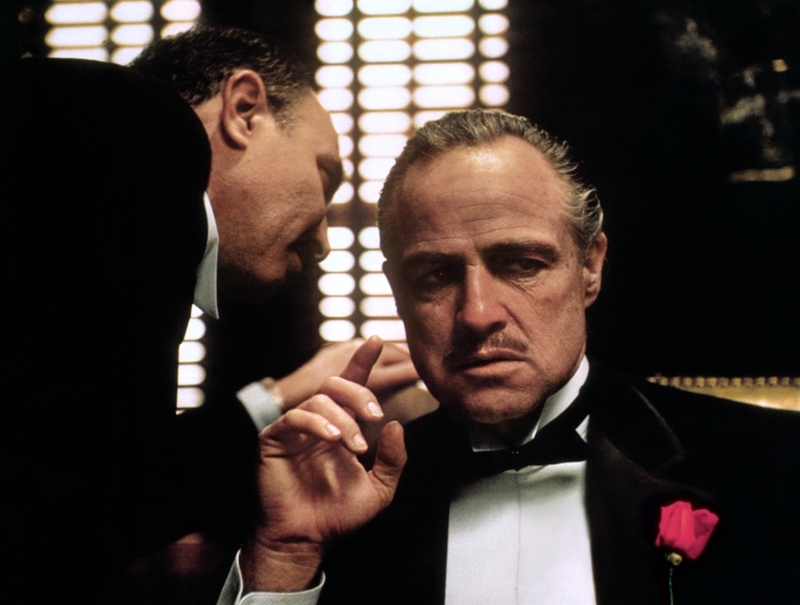
The role also landed him an Oscar, and though he would still end up being hard to work with, most famously for “Apocalypse Now”, he brought immediate star power.
Life Imitates Art
“The Godfather” brought a lot of panache to the world of organized crime. The movie turned crime families on their heads.
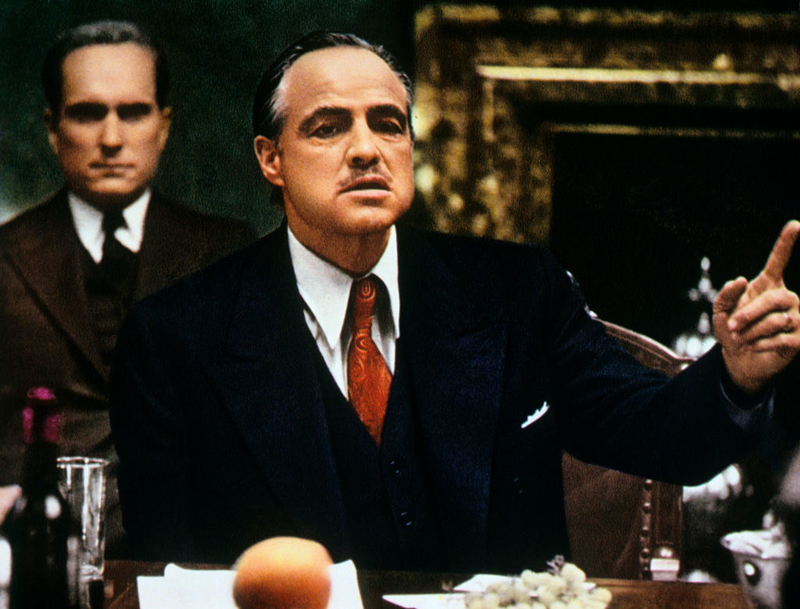
Thankfully for everybody involved with the film, real mobsters were flattered by the portrayals and ended up adopting lots of the practices shown in the movie, mostly thanks to Don Corleone, with the addition of old-fashioned mannerisms and foreign words. One real-life boss was even apprehended by investigators while playing the video game adaptation.
The Priciest Shot in the Movie
One of the most famous scenes from the first movie is Sonny’s death, which takes place at a toll booth. It is one of the bloodiest, most violent scenes in the movie and was the most expensive one to shoot, but not for the reason you might think. The effects used in the movie were little more than blood squibs that popped thanks to an electronic cue, hidden under James Caan’s clothing.
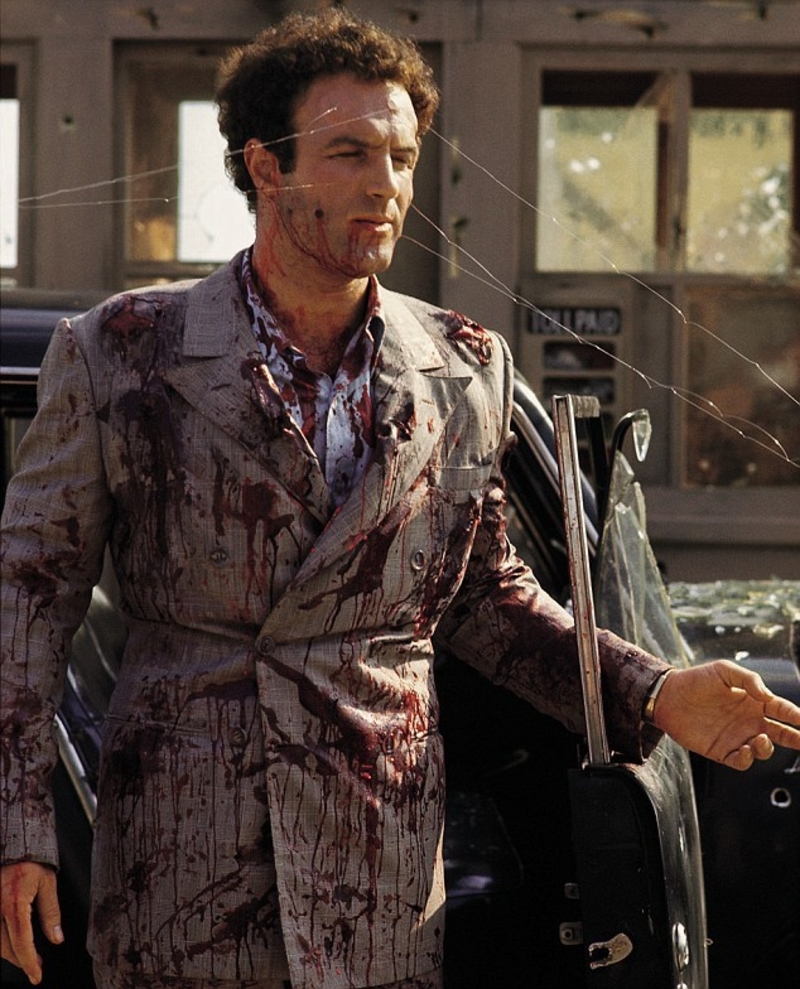
However, the toll booth that was destroyed was real, and the big expense for the shot was the production paying to rebuild the entire toll booth.
Not Their First Choice
Francis Ford Coppola made his name with “The Godfather” franchise, but he was far from the first choice of director for the project. Paramount Picture’s first choice of director was Sergio Leone, famous for his spaghetti Westerns starring Clint Eastwood. But Leone didn’t enjoy the novel and turned the project down.
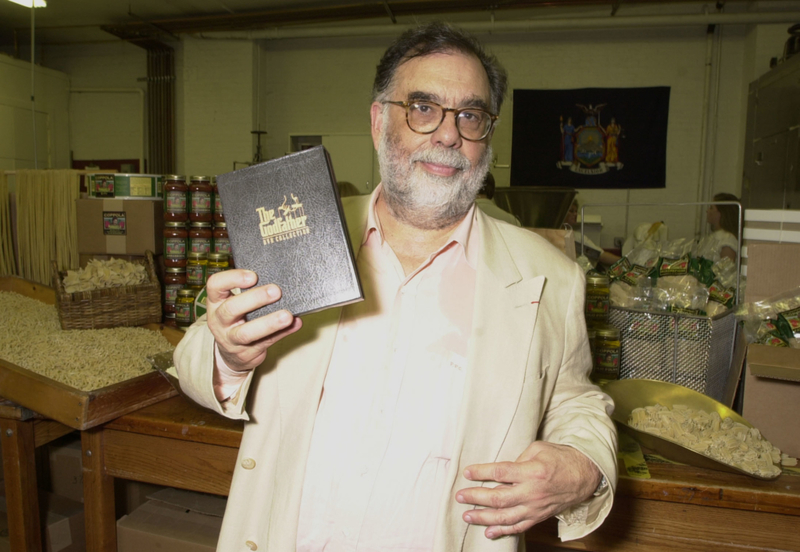
Arthur Penn declined because he didn’t want to do a gangster film so soon after “Bonnie and Clyde”. Costa-Gavras liked the novel but thought he didn’t know enough about American culture. Elia Kaza, Peter Bogdanovich, Fred Zinnemann, Peter Yates, and even Richard Lester were considered, and then Coppola signed on.
Enforced Acting
In “The Godfather Part II”, the character Signor Roberto at one point has to struggle with a door while exiting a scene. It brings a laugh, and the brief moment of levity is a good way to break up the tension of the film.
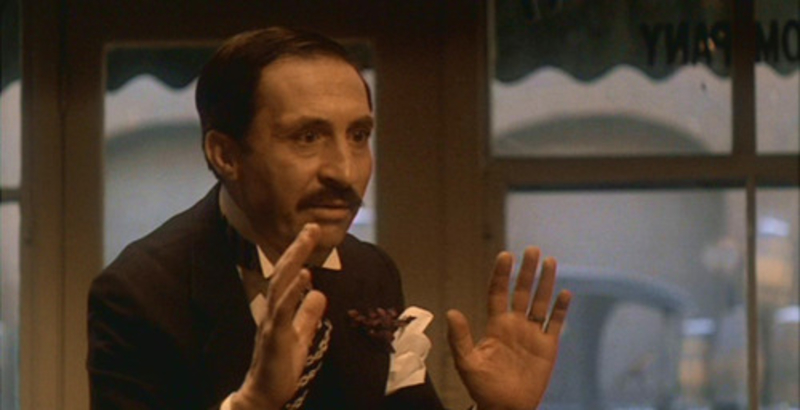
The actor who played Roberto was a famous Italian improv comedian, so Coppola wanted to see how he would react to not being able to get through the door. This was done by having the actor playing Genco, who exited the scene before Roberto, force the door shut with a nail without Roberto’s actor’s knowledge.
Art Happens Under Constraints
When Coppola gave Pacino the script for “The Godfather Part II”, Pacino handed it back and said he didn’t like it, and wouldn’t do the film unless he re-wrote it. What’s a writer/director to do in this situation? Well, Coppola went home and spent the entire weekend re-writing the script.
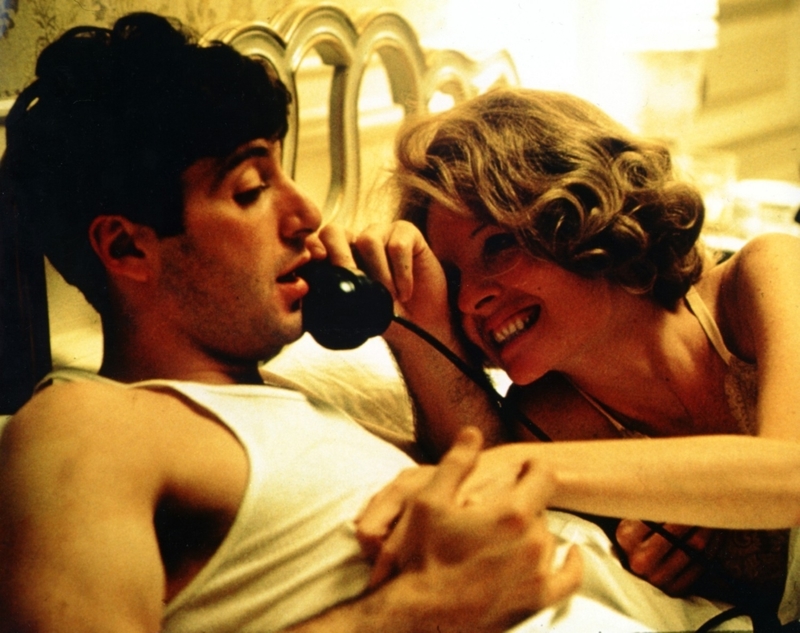
As it turns out, Pacino didn’t really dislike the original script all that much, but he did think it could be much better. A little bit of acting later and Coppola brings out one of the best scripts he’s ever written.
72 thoughts on “Facts About the Godfather Series You Can’t Refuse”
Leave a Reply
You must be logged in to post a comment.
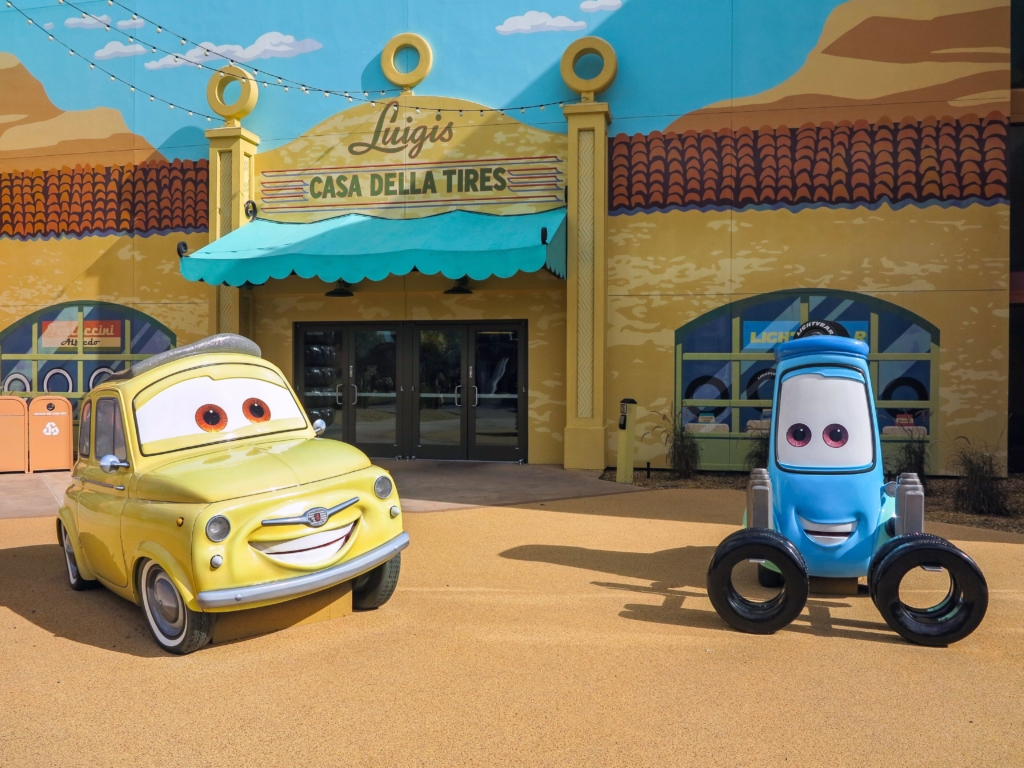
Crazy Disney Fan Theories That Will Make You Rethink Everything

Making Eco-Friendly Beauty a Reality
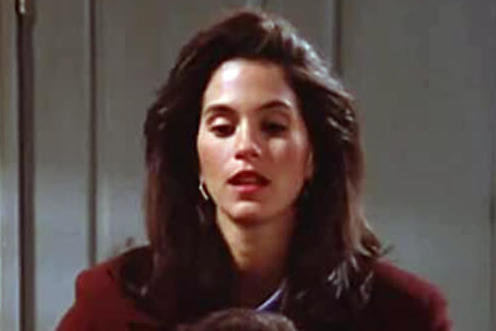
What’s The Deal With Jerry Seinfeld’s Old TV Girlfriends These Days?
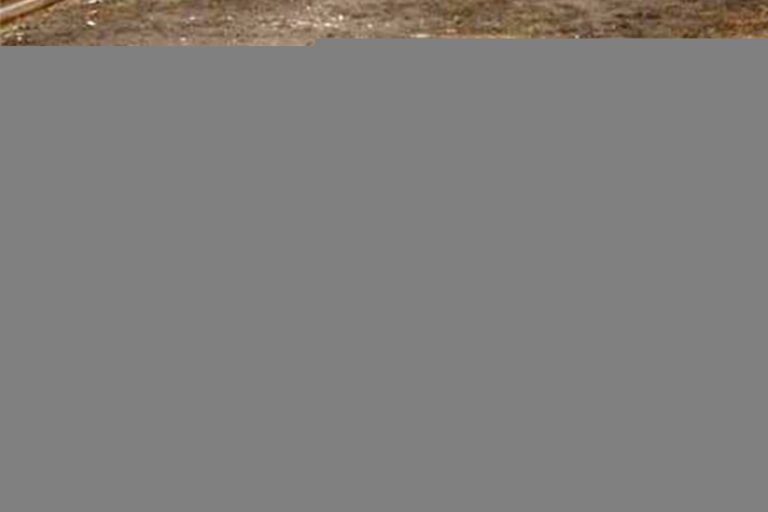
Los letreros de jardín más divertidos y originales que hayas visto

Famous Celebrities You Won’t Believe Are Still Single

More Of The Best Small Towns Across America
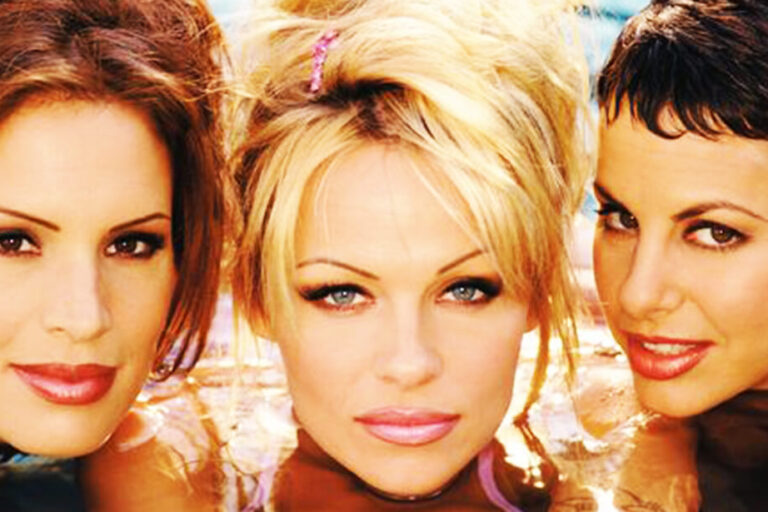
Critics Say: These Are the Worst TV Shows of the New Millennium
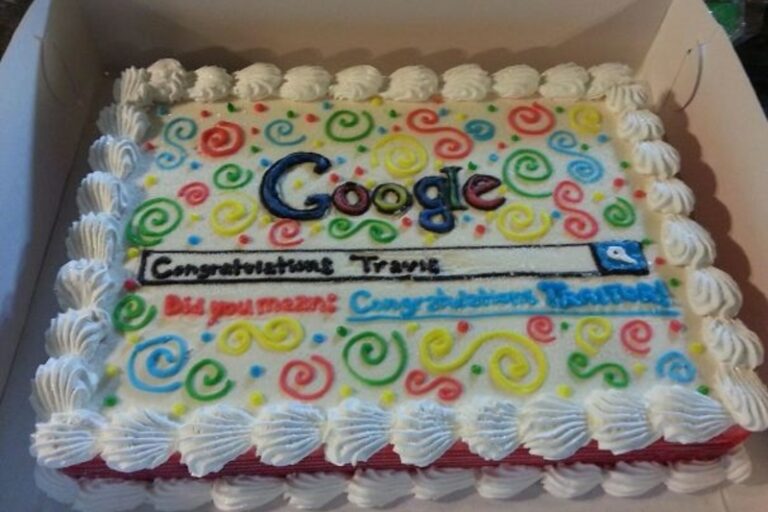
Photos That Prove How Hilarious the 9-5 Life Can Be
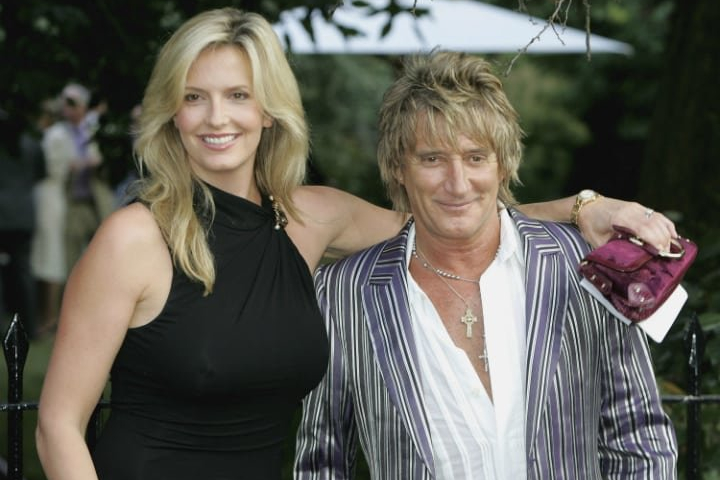
Immeasurable Love: Celebrity Couple Height Differences You Never Noticed Before
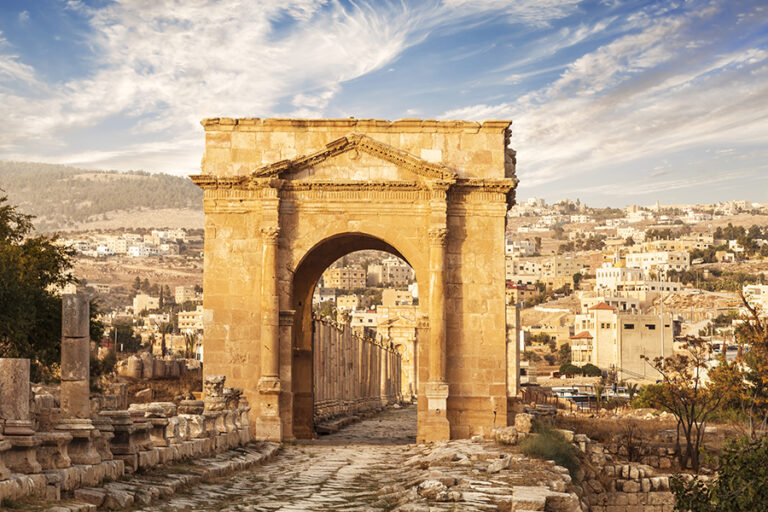
These Countries Have Some Real Beef With America
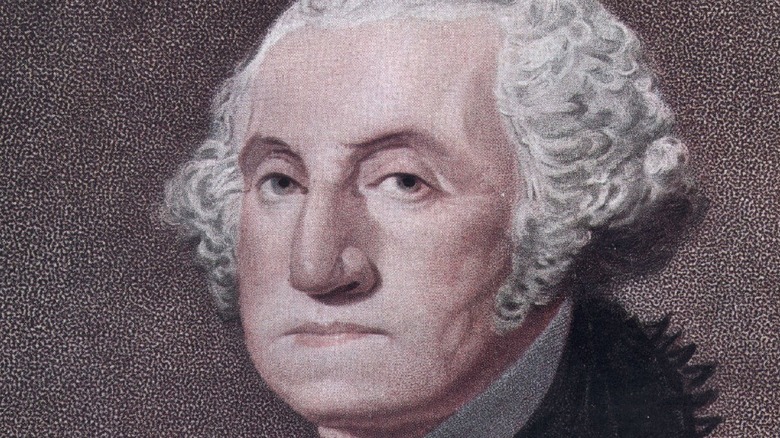
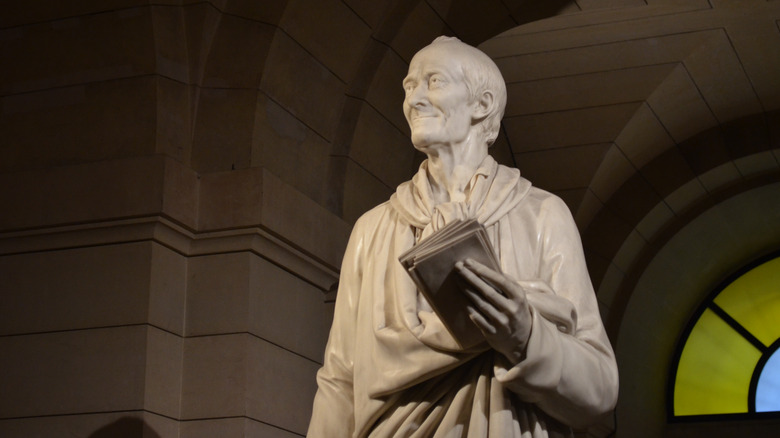

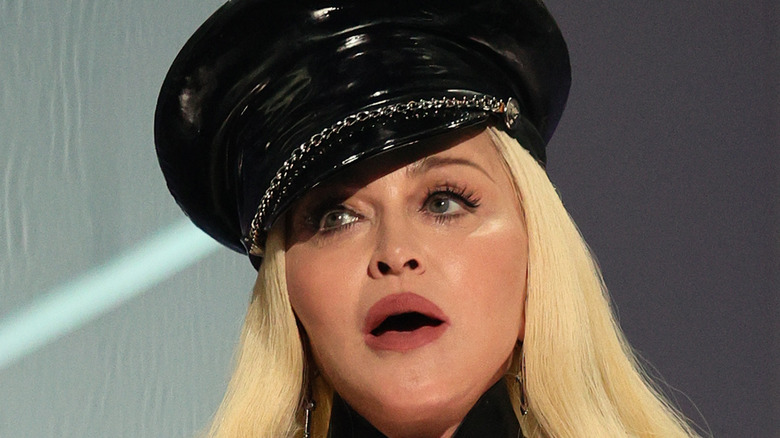


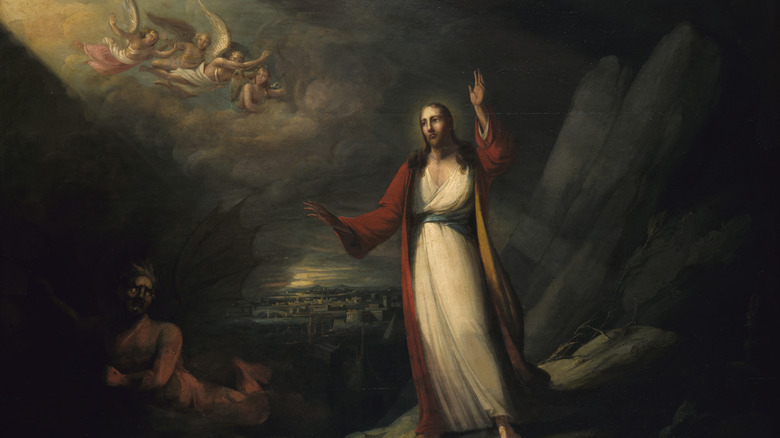
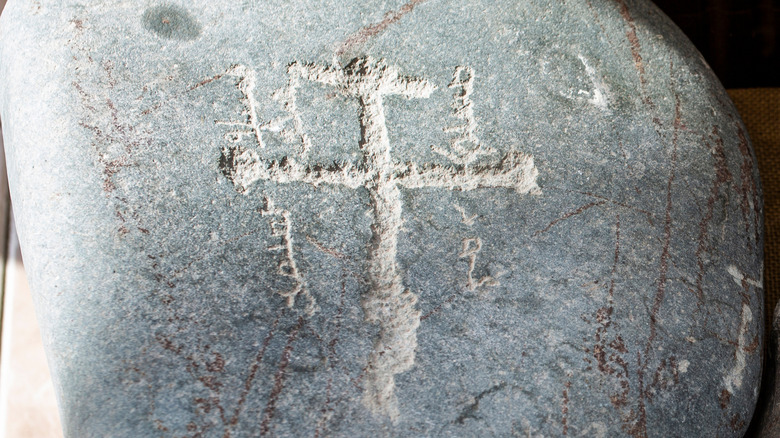
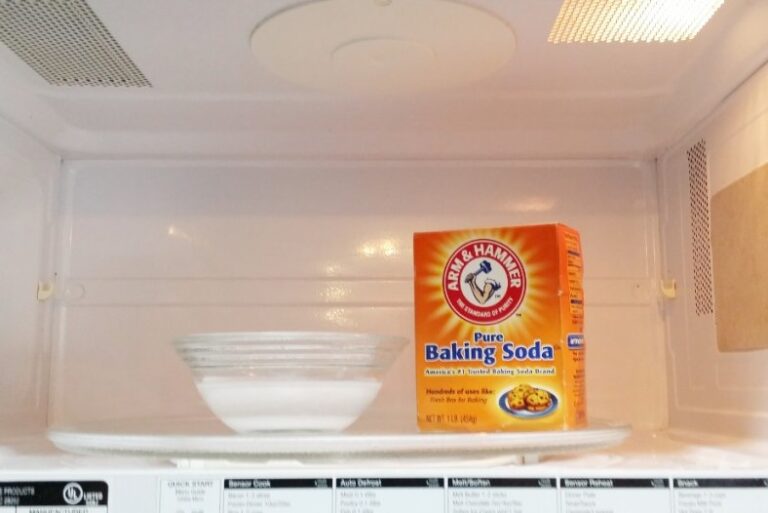
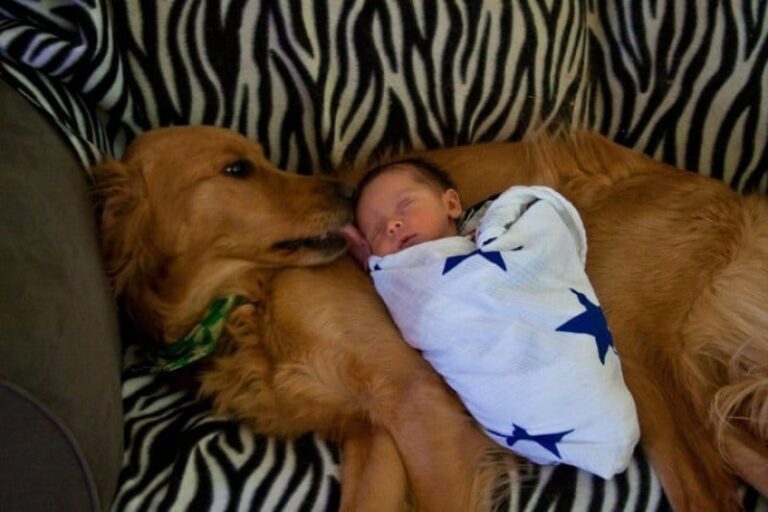
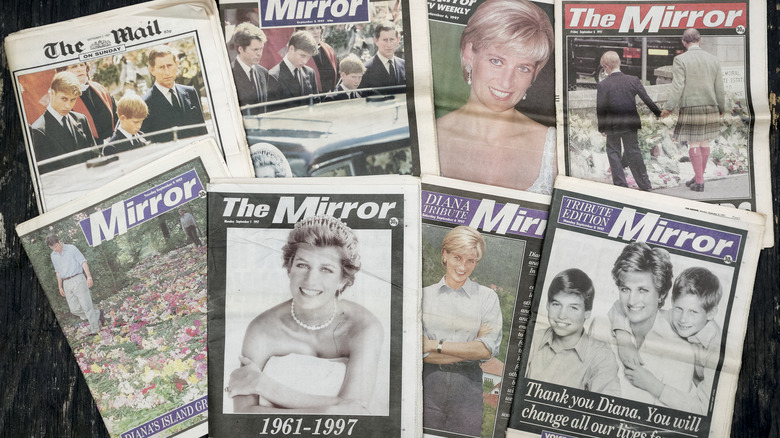
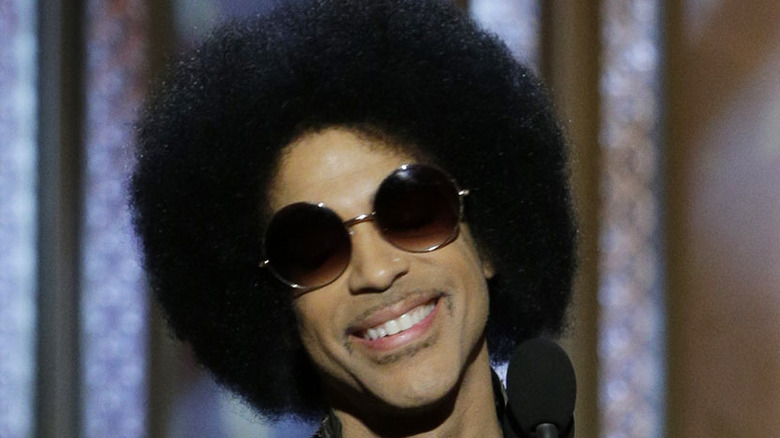
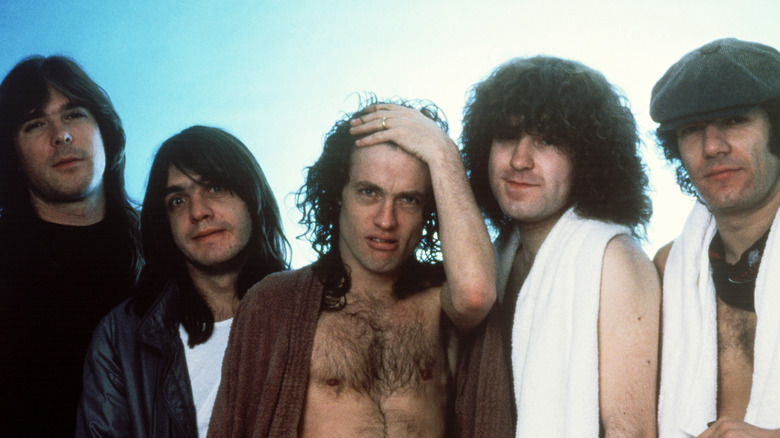

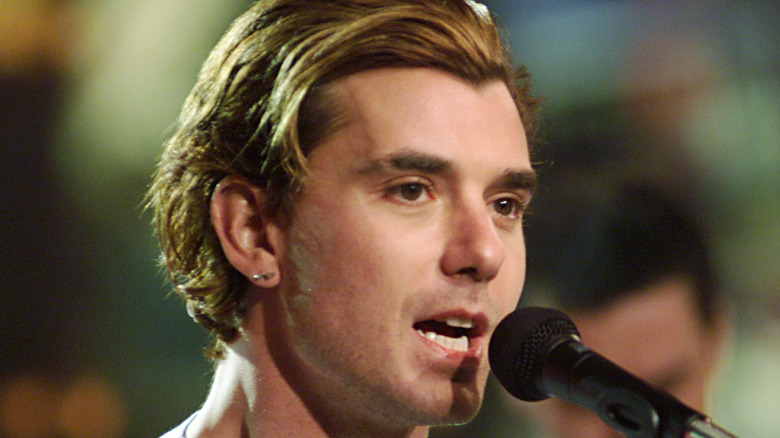
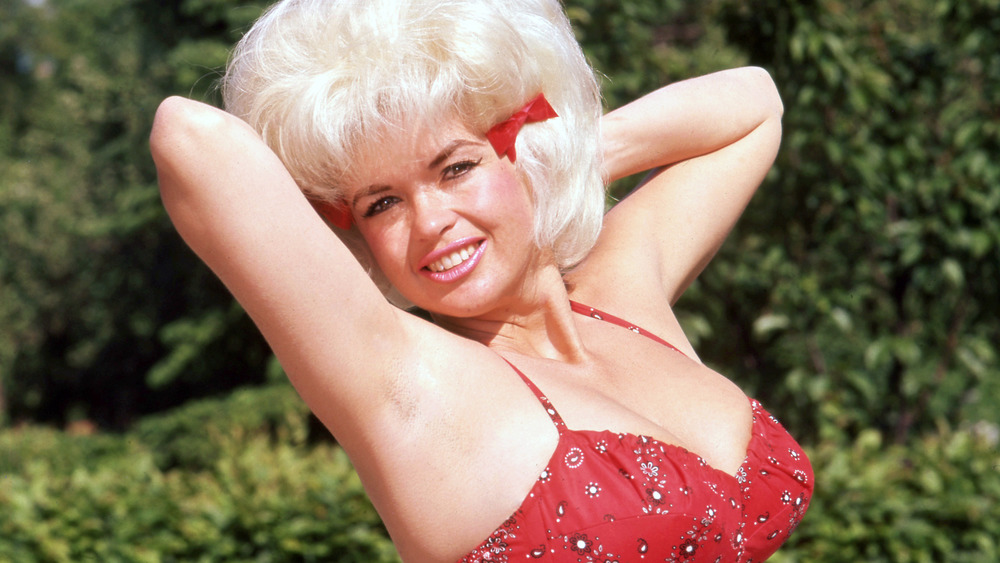
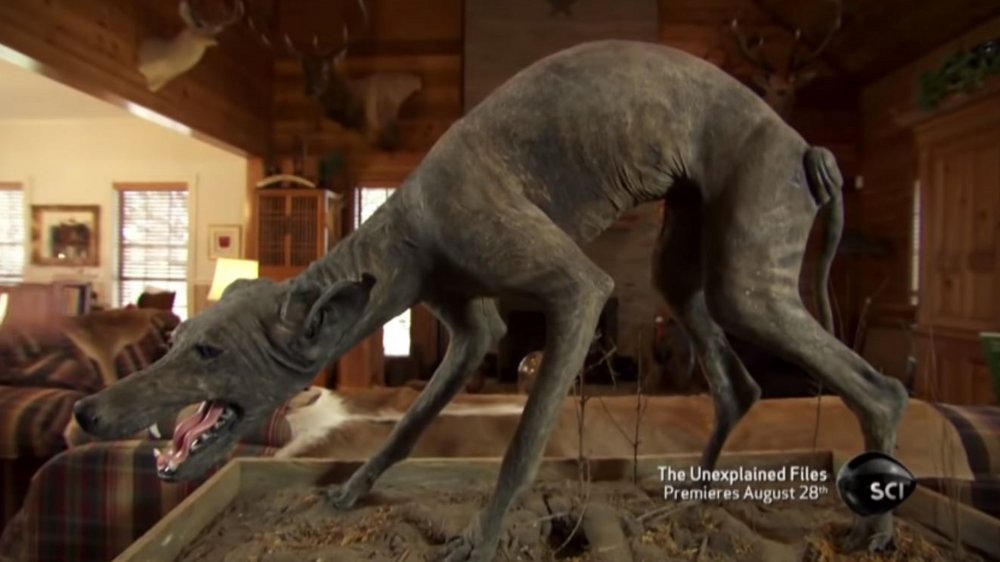
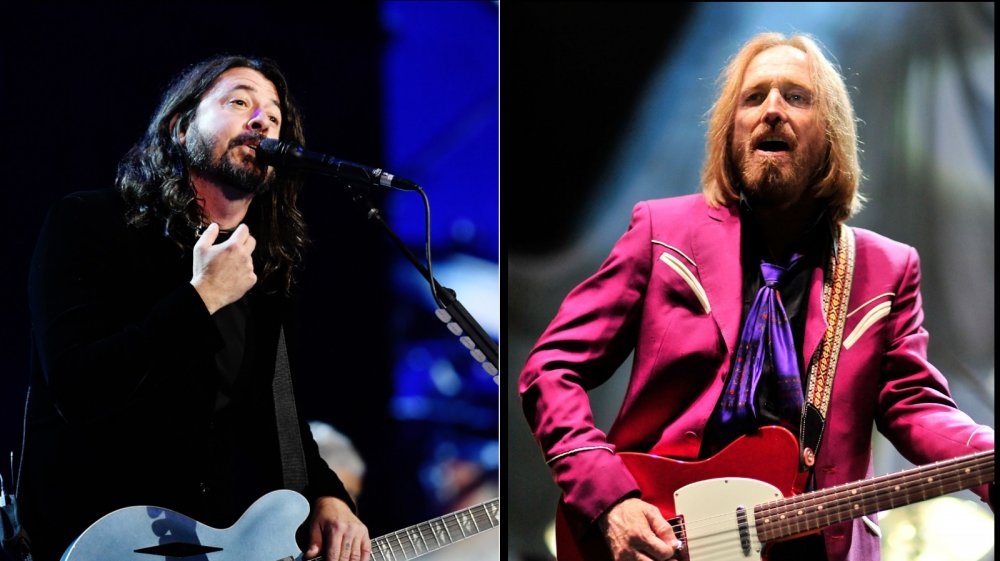
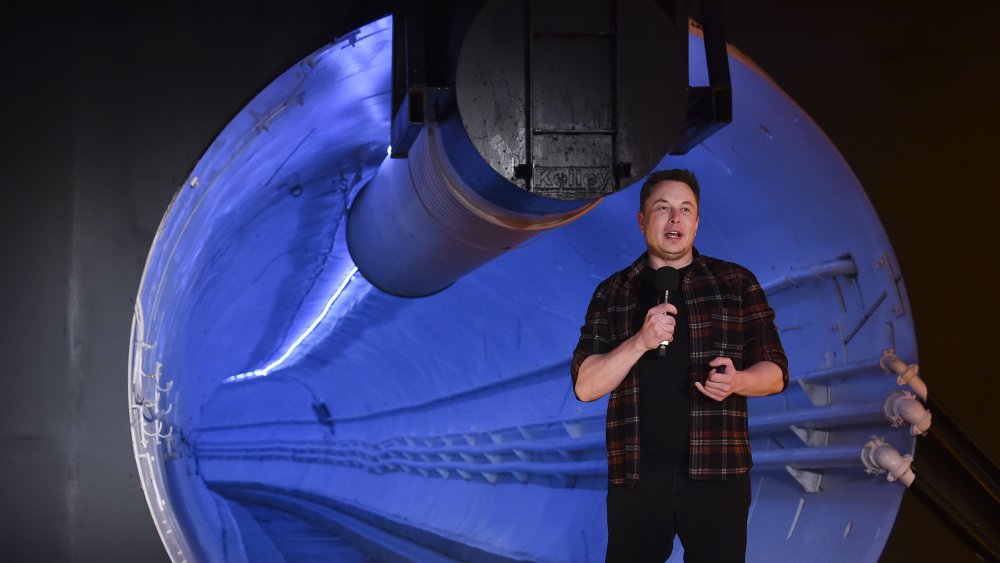
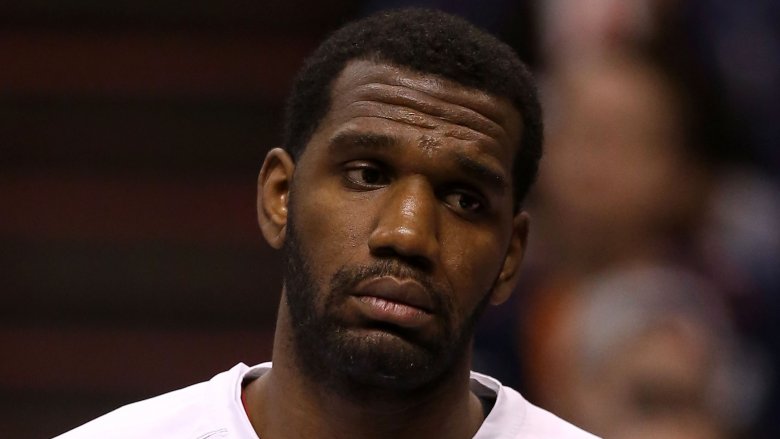



you’re really a good webmaster. The website loading speed is incredible. It seems that you’re doing any unique trick. In addition, The contents are masterwork. you have done a wonderful job on this topic!